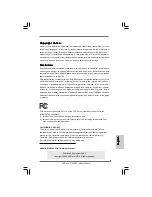
Z183 EMAC Board
User Manual
7
UM008301-0401
Interrupt Selection
Select the interrupt for EMAC service by placing the JP4 jumper in the
appropriate position.
JP4: 1-2 /INT0
JP4: 3-4 /INT1
JP4: 5-6 /INT2
Make sure there is only one jumper inserted in the JP4 jumper stack. It is
recommended that you use rising edge trigger mode of interrupts with the
CS8900A. INT0 cannot be used with edge triggering.
Address Jumpers
The EMAC board also has a 3x3 address routing jumper array. These jumpers
should always be in the A15, A14, and A13 position.
Software Development
CS8900A Address Map
The CS8900A EMAC controller chip should be accessed in 16-bit mode at a
base I/O mapped address of 2300H in the EMAC board’s 64K I/O address
space. The board actually uses a 2000H – 3FFFH range of I/O address map
even though the Ethernet chip is tightly decoded at 2300H – 230FH I/O
locations.
When specifying the “PacketPage” addresses via the on-chip PacketPage
pointer, use the normal addresses specified in the CS8900A manual. Only the
primary “external bus visible” register space is shifted from a default base
address of 300H-30FH to the new 2300H-230FH range.
All buffering required for Ethernet packet transmission and reception is done
on-chip by the CS8900A.
EMAC Hardware Reset
The EMAC hardware employs a latching type of reset logic. When power is
applied or when the RESET button on the EMAC board is pressed, the board
goes into a reset state. The reset gets released when the first/IORD active low
pulse occurs in the 2000H-3FFFH range. This means that the initialization code
for the EMAC driver must make a dummy read at an I/O location in this range.
For example, from Debug Monitor reading an I/O location using a “I” command
at 2000H is adequate.



































